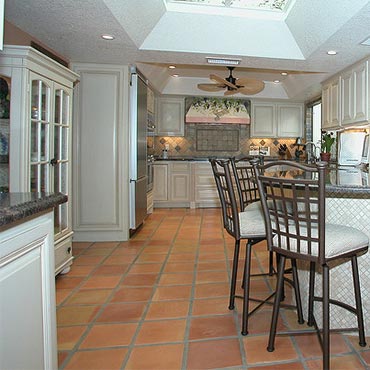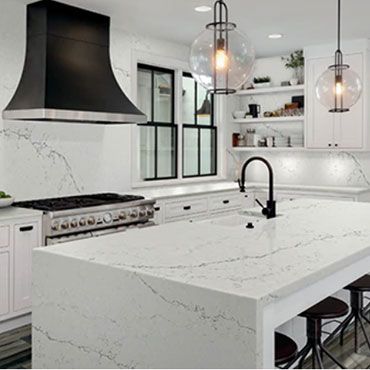Ceramic/Porcelain: Mexican Tile (Saltillo)

Saltillo Tiles: Timeless Elegance Meets Modern Practicality
In the realm of home decoration and design, Saltillo tiles hold a place of reverence and timeless appeal. Originating from Saltillo, Coahuila, Mexico, these handcrafted tiles have journeyed from humble functional elements to pivotal design features, embodying a rich history that resonates with decorators, interior designers, and space planners alike.
The Diverse World of Saltillo Tiles
Saltillo tiles are celebrated for their diverse types and characteristics. Traditionally, they are unglazed, made from natural clay found in the Saltillo region, and are known for their distinctive terracotta hue. However, they come in various finishes - from glossy to matte - and an array of sizes and shapes, including square, rectangular, and hexagonal, accommodating diverse design aesthetics.
Design Versatility: From Rustic Charm to Contemporary Chic
The aesthetic appeal of Saltillo tiles is unparalleled. They lend themselves to various design styles, effortlessly complementing rustic settings with their natural, earthy tones while also fitting into sleek, modern spaces when used in more muted or glazed forms. Their color palette ranges from light oranges to deep reds, offering a spectrum of options. Creative patterns and textures, like herringbone or basketweave, can be formed, making these tiles a favorite among designers seeking versatility.
Practical Benefits: Beyond Beauty
Apart from their visual allure, Saltillo tiles are prized for their functional advantages. They are exceptionally durable, making them ideal for high-traffic areas. Their water resistance is a boon for spaces like kitchens and bathrooms. Moreover, their ease of cleaning and maintenance is a practical feature that homeowners cherish.
Installation Insights
The installation of Saltillo tiles is as crucial as their selection. Proper substrate preparation, careful layout planning, and professional installation are paramount to ensure longevity and aesthetics. It’s a process where art meets precision, requiring attention to details like expansion joints and sealing.
Eco-friendly and Sustainable
In today’s environmentally conscious world, Saltillo tiles score high on sustainability. Made from natural clay, they are recyclable and boast energy-efficient production processes. This eco-friendliness adds another layer of appeal to these already captivating tiles.
Trends Shaping the Future
Saltillo tiles continue to evolve, embracing technological advancements like digital printing and 3D textures. The introduction of innovative sizes and shapes is pushing the boundaries of traditional tile design, making them an exciting element in modern interiors.
Saltillo in Action: Real-world Examples
In a recent high-end residential project, designers used Saltillo tiles to create a seamless transition between indoor and outdoor spaces, showcasing their versatility. Similarly, a boutique café employed these tiles in a herringbone pattern, bringing warmth and character to the space.
In Conclusion: A Testament to Timeless Appeal
Saltillo tiles are more than just a flooring option; they are a testament to the fusion of historical richness, aesthetic versatility, and practical functionality. Whether it's a traditional home or a contemporary commercial space, these tiles offer endless possibilities, making them a compelling choice for any design project. As we continue to embrace diverse interior styles, Saltillo tiles stand as a versatile, beautiful, and practical selection, encouraging us to blend the old with the new in our quest for unique and inspiring spaces.
Brand Overview


DalTile® Countertops
Profile | Website | Blog
Our extensive selection includes every option, from the finest natural stone to enduring ONE Quartz to our award-winning Panoramic Porcelain.







